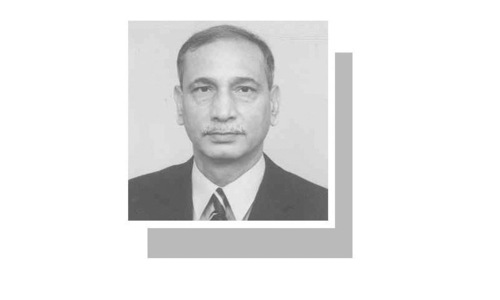DADU/HYDERABAD: World Bank’s irrigation expert Dr Charles M. Burt has advised the Sindh barrages management to construct stilling wells equipped with digital system and electronic sensors to determine with precision the gauge levels at off-taking canals of barrages.
Dr Burt, a world renowned expert associated with the Irrigation Training Research Centre in California, visited Kotri Barrage at the weekend as part of the World Bank training programme for Sindh’s irrigation officers under the WB-funded programme of Sindh Barrages Improvement Project (SBIP).
Dr Burt said during a briefing by technical officers on hydraulic structure at Kotri barrage and distribution of water through off-taking canals that the existing gauges were not measuring precise level of water at barrages and canals due to fluctuation in water surface profile.
He informed the officers that the current rating system was good but it was old, i.e of British era, therefore, there was need of calibration of all off-taking canals as per modern standards.
He advised the management of Kotri barrage that all parameters such as upstream and downstream gauge and pond level and gate opening data were required for calibration under modern system of computing flow rate.
Dr Burt had a detailed visit of KB feeder and Akram Wah and its head regulator. The calibration of canals was highly important for management of barrages as it determined flow rate in the downstream of head regulators, he said.
Dr Charles M. Burt inspecting barrages; training of officials begins today
Dr Burt was accompanied by Ahmed Junaid Memon, water management expert of United Nations’ Food and Agriculture Organisation, Omer Karim, agriculture engineer at UN, and irrigation department’s superintendent engineers Sajid Ali Bhutto, Sohail Hameed Bhutto, Habib Ursani, Orangzeb Memon, Tariq Asad Ursani, Imran Aziz Tunio and Dr Ali Asghar Mahesar. He shared his experience in water management system in America with the Kotri barrage officers.
Dr Burt had visited Hydraulic and Research Laboratory near old Phulelli canal in Hyderabad on Thursday last where he checked physical model of all parameters constructed as per design and to be used for demonstration in training which would start on Monday (today) and continue for five days at Hyderabad Gymkhana.
SBIP’s deputy project director Sajid Ali Bhutto briefed Dr Burt and irrigation officers that SBIP had already started calibration of 14 off-taking canals’ head regulators at three barrages of Guddu, Sukkur and Kotri. The irrigation department was aware of the importance of equitable distribution of water to canals, he said.
The training is aimed at teaching newly recruited engineers to operate and maintain barrages and calibration of head regulators of 14 canals in all barrages of the province and thus help enhance their capacity.
HYDERABAD: An official said that a model of “modernisation of canals”, built as per designs and shared with hydro laboratory head Habib Ursanai and Sida officials by Dr Burt, was yet to be run by an expert in line with developed world’s irrigation practices like in the US. “The idea was good but its implementation is the main question,” he remarked, adding that there were many questions about the working of this model in given conditions which would be raised before the expert.
Sindh Irrigation and Drainage Authority (Sida) managing director Pritam Das said that Dr Burt had suggested construction of an additional regulator at the outlet of Chotiyari reservoir, which fed lower Nara Canal in Sanghar.
“He discussed concept of maintaining water flows at watercourse level and suggested construction of long crested wall,” he said.
“We are told in answer to our questions that uniformity of flows should be ensured and fluctuations should be avoided. Formation of structures inside canal upstream were also suggested to see that accumulating silt is flushed out and water flows downstream,” said an irrigation officer.
The officers are being briefed on how regulation of canals is to be modernised for better flows.
The officer pointed out uniformity in flows as suggested would not be acceptable by stakeholders in the particular structure of irrigation system in the province as this could enable those having direct outlets (DOs) to have full use of available flows, leaving downstream water users high and dry in tail-end areas.
“The officers are being sensitised about modernisation of the system that might be something new for those officers who follow the existing old irrigation practices,” said another official. The rating curve was extensively discussed with officers in hydrology laboratory and at Kotri barrage, he said.
“The donors’ concern is that water regulations that are being managed the world over, are shared with officers so that water management’s trends can be reformed and best technological usage can be ensured in regulating irrigation system,” said another official accompanying the expert.
Prof Burt and the irrigation officers would visit Sukkur Barrage on March 6 and Guddu Barrage on March 7. Thereafter, the officers would accompany him to Punjab where they would inspect irrigation network as part of their training.
“We have given our humble opinion that what is being suggested may not be accepted by community,” said an officer. Secondly, he added, this would require billions of rupees that could only be arranged through foreign loans.
Published in Dawn, February 28th, 2022













































Dear visitor, the comments section is undergoing an overhaul and will return soon.